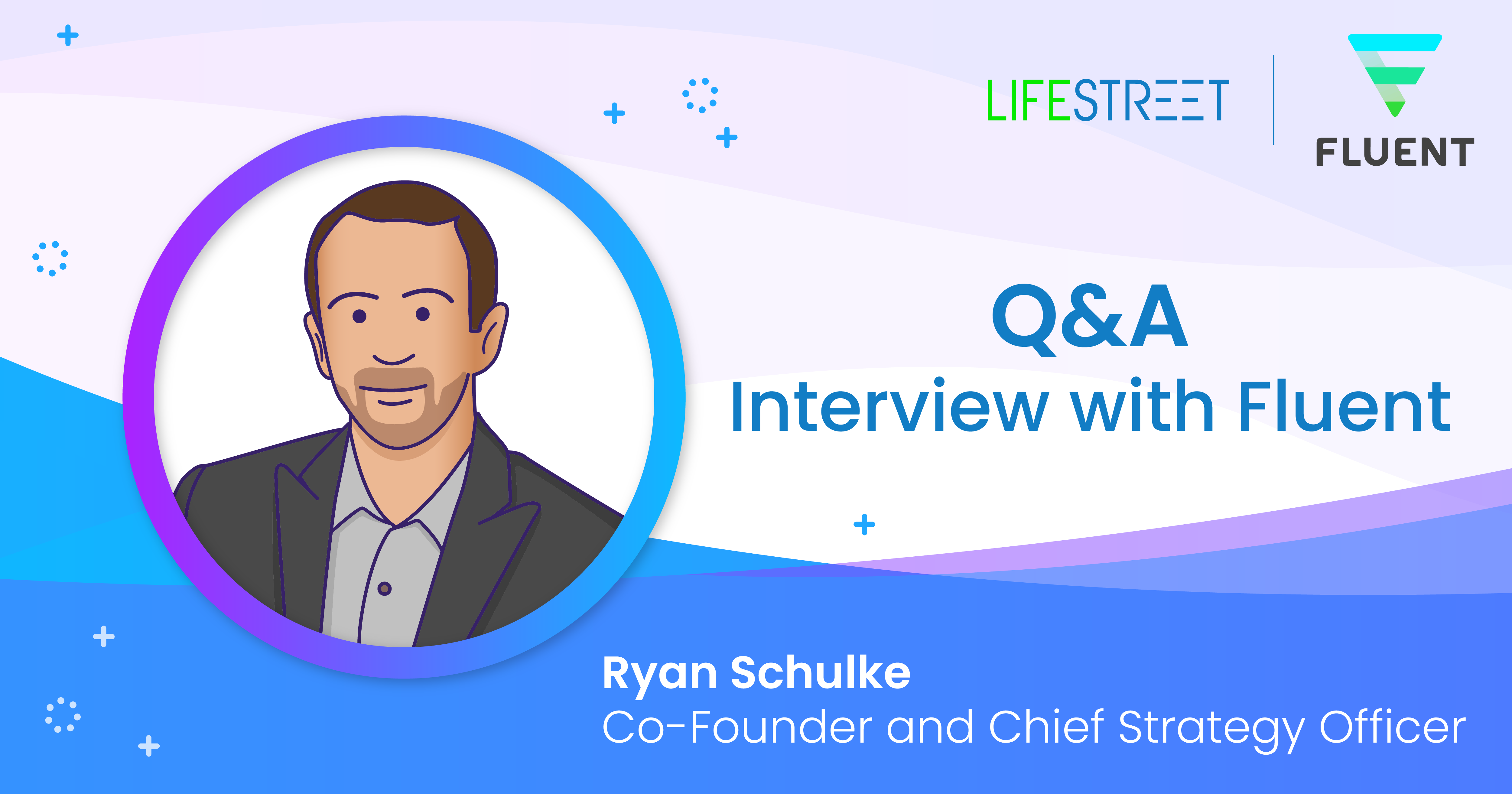As a long time player in the digital media space, Fluent has helped brands across a variety of industries launch, scale, and optimize successful digital advertising campaigns. For some time now, we’ve worked with Fluent to help their clients find valuable customers across the mobile ecosystem with in-app advertising campaigns. In this partner spotlight, we sat down with Ryan Schulke, Co-Founder and Chief Strategy Officer at Fluent, to discuss the value of app-to-web campaigns and how brands can confront consumers’ behavior in a changing economy.
1. What is your position and what do you do at Fluent?
As Co-Founder and Chief Strategy Officer at Fluent, I create scalable and sustainable product and business development strategies to support Fluent’s growth agenda. Over the past decade, I’ve led the organization through its 2015 acquisition, transition into a stand-alone public company, and ongoing expansion into international markets.
2. What are some examples of brands that Fluent works with?
Fluent works with brands across a variety of industries including mobile gaming, streaming and subscription services, fintech, QSR (quick service restaurants), and more recently, ecommerce. We are directly integrated with over 500 active clients, executing customer acquisition campaigns for brands like Sirius XM, Playtika, and Capital One.
3. How does Fluent help brands acquire customers?
Our owned and operated digital media portfolio is designed to help advertisers connect with hundreds of millions of highly engaged consumers across exclusive ad inventory. Leveraging cutting-edge data science, proprietary optimization technology, and a privacy-forward approach, we empower brands to acquire and retain customers across the entire omnichannel marketing experience.
4. Why is tapping into mobile channels important — even for brands that might not have a mobile app of their own?
For brands running the same ads across the same channels, the law of diminishing returns can become all too real. Tapping into mobile ad inventory can allow non-endemic brands to reach highly targeted and engaged audiences they wouldn’t find elsewhere. Insights into app category, game genre, OS and more, can also help brands identify audiences that align with their offerings and in turn, deliver more personalized consumer experiences.
5. Have there been any aspects or results from mobile app-to-web campaigns that have surprised your team?
What’s most surprising is the amount of DSPs doing little to no work with advertisers attempting to drive web-based events. For example, while streaming services companies have mobile apps, they often use web-based subscription sign-ups as the primary KPI for their customer acquisition campaigns. For Fluent, leveraging mobile DSPs for web-based executions was more difficult than we originally anticipated. There is room for growth in the DSP sector if we can make this execution work more seamlessly – this is an area where Fluent and Lifestreet reached early alignment and continue to focus on.
6. What’s your advice for brands that might not have their own app but would still like to tap into mobile channels to find quality customers?
Don’t be afraid to get creative with in-app ad formats. A far cry from traditional static ads, rewarded ads and playables seamlessly blend into an app’s design, creating a more organic and engaging experience for the user. To make the most of this channel, you’ll want to leverage a design resource that knows how to build and optimize ad creatives for in-app environments.
7. What are some best practices for running successful mobile app-to-web campaigns?
Consumers expect seamless experiences across digital touchpoints, and the journey from in-app to mobile web environments is no exception. Be sure to create in-app ads that mimic the appearance of the landing page where you’re directing users. After finding an approach that works, continue to test various elements such as CTAs, animation, and copy to identify new creative lifts and increase engagement. In addition to creative, operational components like proper integration with a DSP and accurate attribution are critical. If attribution is flawed, then no amount of creative firepower will enable you to buy successfully given the sheer volume of impressions accessible in this channel.
8. How do you expect mobile habits to change in today’s economy? How should advertisers be approaching acquisition to best respond to these shifts?
As economic pressures continue to rise and consumers look for deals and ways to earn extra cash, we expect the use of incentives to become more prevalent in mobile UA. In a recent survey of over 25K members of the Fluent audience, we found that 38% of respondents have downloaded a new game in exchange for a monetary reward; of these users, 65% have made in-app purchases compared to just 44% of their non-incentivized counterparts. The beauty of rewarded ads is that they are optional to engage with – users self-select offers based on their interests, which means marketers only connect with the most highly-engaged audiences.
9. What’s the value of investing in channels outside of the walled gardens in today’s privacy landscape?
Greater transparency into performance metrics makes it easier to target and optimize outside of the walled gardens. Not only do you minimize the risk tied to heavy reliance on a handful of high-performing channels, you can also access untapped audiences, promote brand discovery, and better maximize your ad spend.
10. What are some alternative UA channels you’re looking forward to today?
Rewarded campaigns, editorial content, influencer partnerships, and even post-transaction ad inventory are just some alternative UA channels that can help advertisers unlock incremental audiences and avoid rising acquisition costs across mainstream media sources.
11. What is a top problem brands need help solving when it comes to customer acquisition in today’s digital marketplace?
Gone are the days when advertisers looked to Fluent purely for growth. The uncertain economy, shrinking ad budgets, and fierce competition has brought our industry into a new age of accountability. Today, the clients want quality and scale. Every day we work to deliver scalable growth along with the quality and ROAS to match.
